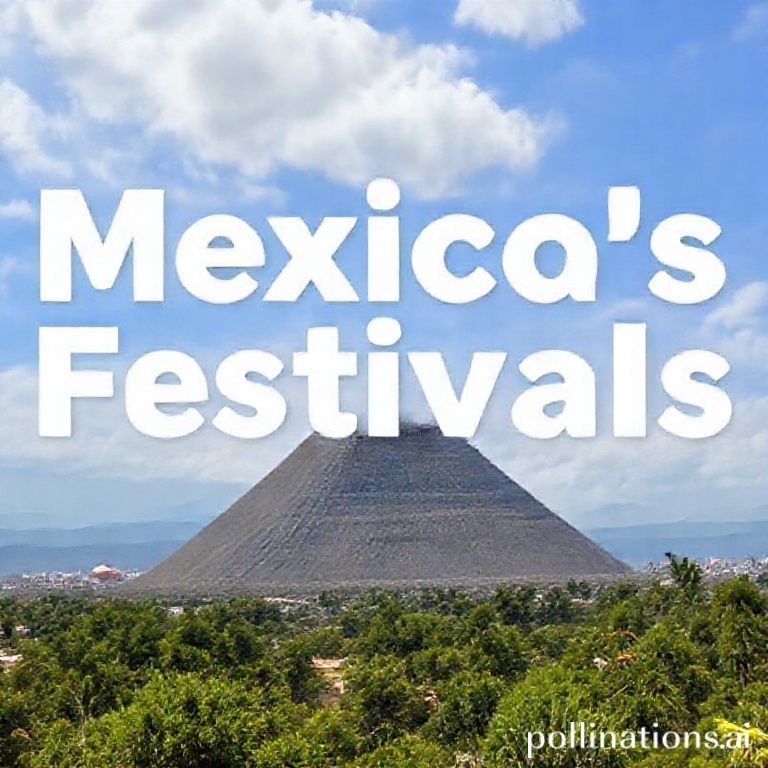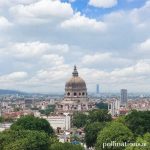Mexico, a land brimming with vibrant culture and rich traditions, offers a kaleidoscope of festivals throughout the year. From ancient indigenous celebrations to lively modern fiestas, there’s always a reason to celebrate in Mexico. Planning your trip around one of these festivals can be an unforgettable way to immerse yourself in the local culture and experience the true spirit of Mexico.
This guide will take you on a journey through the best festivals Mexico has to offer, month by month, ensuring you don’t miss out on the most exciting events. Whether you’re a seasoned traveler or planning your first trip, prepare to be amazed by the colorful traditions, delicious food, and infectious energy of Mexican festivals.
January: Día de los Reyes Magos (Three Kings Day)
January kicks off with Día de los Reyes Magos on January 6th, a celebration commemorating the Three Wise Men’s visit to baby Jesus. This is a particularly special day for children, as they receive gifts, often more so than on Christmas. Families gather to share a “Rosca de Reyes,” a sweet bread baked with a hidden figurine of baby Jesus. Whoever finds the figurine is then responsible for hosting a tamale party on February 2nd, Día de la Candelaria.
Where to Celebrate
- Nationwide, but especially vibrant in smaller towns and villages.
- Look for local bakeries selling Rosca de Reyes and participate in community gatherings.
February: Día de la Candelaria (Candlemas)
Following up on the Rosca de Reyes tradition, February 2nd marks Día de la Candelaria. This day celebrates the presentation of Jesus at the temple. Families dress up figurines of baby Jesus and take them to church to be blessed. The person who found the baby Jesus figurine in the Rosca de Reyes hosts a tamale feast for friends and family, continuing the festive spirit.
Enjoying the Festivities
- Attend a church service to witness the blessing of the baby Jesus figurines.
- Indulge in a delicious tamale feast with friends or family.
March: Festival de México (Mexico City)
March brings the Festival de México, a cultural extravaganza held in Mexico City. This festival showcases a diverse range of artistic performances, including music, dance, theater, and visual arts. World-renowned artists and performers from across the globe converge in Mexico City, creating a vibrant and dynamic cultural scene.
Experience the Arts
- Check the festival schedule for performances that interest you.
- Explore the various venues throughout Mexico City.
- Book tickets in advance, as popular shows often sell out.
April: Feria Nacional de San Marcos (Aguascalientes)
April explodes with the Feria Nacional de San Marcos in Aguascalientes, one of Mexico’s largest and most famous fairs. This multi-week event features bullfights, concerts, livestock exhibitions, cultural performances, and a wide array of food and drink. The city transforms into a vibrant party atmosphere, attracting millions of visitors each year.
A True Mexican Fiesta
- Experience a traditional bullfight (if you’re comfortable with the practice).
- Enjoy live music and dance performances.
- Sample regional cuisine and refreshing beverages.
May: Cinco de Mayo (Nationwide)
While often misunderstood outside of Mexico, Cinco de Mayo commemorates the Mexican army’s victory over French forces at the Battle of Puebla in 1862. Although not as widely celebrated in Mexico as it is in the United States, many cities, particularly Puebla, host parades, historical reenactments, and cultural events. It’s a day to celebrate Mexican heritage and resilience.
Celebrating Mexican Heritage
- Attend a parade or cultural event in Puebla.
- Enjoy traditional Mexican food and music.
June: Guelaguetza (Oaxaca)
June is the perfect time to start anticipating July’s Guelaguetza. Formally the festivities fall on the last two Mondays of July, but the entire month buzzes with excitement and smaller, related events. Guelaguetza is an Indigenous cultural event that takes place in Oaxaca City. It showcases dances, music, and costumes from the different regions of Oaxaca. It’s a powerful display of cultural pride and diversity.
Witnessing Cultural Pride
- Purchase tickets to the main Guelaguetza performances in advance.
- Explore the surrounding villages to experience regional variations of the celebrations.
- Learn about the history and significance of each dance and costume.
July: Guelaguetza (Oaxaca)
The main event for Guelaguetza happens in July! Formally the festivities fall on the last two Mondays of July, but the entire month buzzes with excitement and smaller, related events. Guelaguetza is an Indigenous cultural event that takes place in Oaxaca City. It showcases dances, music, and costumes from the different regions of Oaxaca. It’s a powerful display of cultural pride and diversity.
Witnessing Cultural Pride
- Purchase tickets to the main Guelaguetza performances in advance.
- Explore the surrounding villages to experience regional variations of the celebrations.
- Learn about the history and significance of each dance and costume.
August: Assumption of Mary Celebrations
Across Mexico, August 15th brings celebrations for the Assumption of Mary. Religious processions, vibrant fairs, and traditional dances mark this important date in the Catholic calendar. Many towns and villages host special events, offering a glimpse into local traditions and religious devotion.
Participating in Local Traditions
- Attend a church service or religious procession.
- Explore local markets and fairs.
September: Independence Day (Nationwide)
September is a month of patriotic fervor, culminating in Mexico’s Independence Day on September 16th. Celebrations begin the night before with “El Grito,” a reenactment of the call to arms by Miguel Hidalgo in 1810. Cities and towns across the country erupt in fireworks, music, and dancing, creating an electrifying atmosphere of national pride.
Celebrating National Pride
- Attend “El Grito” ceremony in a central plaza.
- Enjoy fireworks displays and live music performances.
- Sample traditional Mexican dishes and drinks.
October/November: Día de Muertos (Day of the Dead)
October and November bring the most iconic Mexican celebration: Día de Muertos (Day of the Dead). This unique holiday honors deceased loved ones with colorful altars, vibrant decorations, and festive gatherings. Families visit cemeteries, decorate graves, and share food and stories with the spirits of the departed. It’s a beautiful and poignant celebration of life and remembrance.
Honoring the Departed
- Visit a cemetery to witness the elaborate altar displays.
- Participate in community events and parades.
- Learn about the symbolism of the Day of the Dead traditions.
December: Las Posadas & Christmas
December is a month of joyous festivities, starting with Las Posadas, a nine-day celebration leading up to Christmas. These processions reenact Mary and Joseph’s search for shelter in Bethlehem. Christmas Eve is typically celebrated with a large family meal, and many attend midnight mass. The holiday season culminates with New Year’s Eve, celebrated with fireworks and festive gatherings.
Embracing Holiday Cheer
- Participate in a Las Posadas procession.
- Attend midnight mass on Christmas Eve.
- Enjoy festive meals with family and friends.
Conclusion
From vibrant cultural performances to poignant celebrations of life and remembrance, Mexico’s festivals offer a unique window into the country’s rich heritage and traditions. This month-by-month guide provides a starting point for planning your trip around these unforgettable events, allowing you to immerse yourself in the true spirit of Mexico and create lasting memories.
Ready to experience the magic of Mexican festivals firsthand? Share this article with your travel buddies and start planning your adventure today!
IMAGE: A vibrant and colorful photograph capturing the essence of Día de Muertos (Day of the Dead) in Oaxaca, Mexico. An elaborately decorated altar filled with marigolds, candles, sugar skulls, and offerings of food and drink. In the background, families gather, dressed in traditional attire, celebrating and remembering their loved ones. The scene is warm, inviting, and filled with a sense of joyous remembrance. The style should be vibrant, saturated, and documentary-like, capturing the authentic atmosphere of the celebration.


